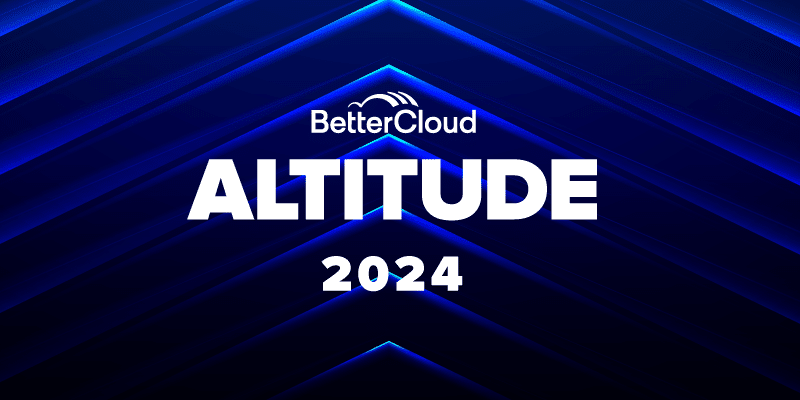SaaSOps Stories With Craig Holland, SVP of Global Infrastructure at Condé Nast
August 19, 2020
7 minute read

Craig Holland is the SVP of global infrastructure at Condé Nast, which means he’s in charge of anything that has a computer or network attached to it—at one of the largest media companies in the world.
Although he has a long history of working and managing teams remotely, Holland had to think outside the box about how he supported his large IT team through the COVID-19 pandemic. Our Chief Customer Officer Rachel Orston sat down with Holland to discuss the unique challenges he’s faced over the last few months, as well as the lessons he’s learned from his colleagues along the way.
Editor’s note: This conversation has been edited lightly for clarity.
Just for a bit of background for everyone reading this, can you tell me about your team? How big is the IT department at Condé Nast—and where is everyone located?
That’s a good question. We have around 50 operations folks offshore, depending on the day of the week. For a while, a team of 20 in New York supported the Condé Nast US headquarters, but then we merged with Condé Nast International about a year ago. In the process, I picked up another 15 direct reports.
All in all, there are probably between 70 and 75 people in the IT organization right now, depending on how we count them. And we’re spread out all over now. I’ve always worked from California, but I’ve got team members all over New York, London, India, and Delaware. We’ve had to onboard a few that have never set foot in any office.
Lately we’ve hired candidates entirely remotely, and it’s really strange to suddenly find yourself working with someone you’ve never seen in person. I always have this urge to fly out and say hello or have a beer with them, but you can’t do that right now. It’s an interesting dilemma to get them up to speed.
On that note, what things do you feel you were prepared for when the pandemic hit? And what things do you feel took you by surprise?
In terms of infrastructure, we were ready. We had been in the cloud for a long time. I’ve been pushing any on-prem infrastructure that I could into the cloud. The only thing we can’t literally push in there is the network itself, because that’s a physical thing. But as soon as the pandemic hit, we had a strong remote workforce and all we needed to do was tell them to stay home.
Our communication and collaboration tools are all in the cloud, so it was more of a logistical challenge. How do you get your employees their laptops if they left them at their desks? And how do you get them what they need for their home office within reason?
In our business, you can’t really have a week when we aren’t productive because that keeps us from publishing our next issue. So I pre-purchased a lot of laptops and monitors because I knew that we’d lose the supply chains. Thankfully, we haven’t had any shortages of equipment. More importantly, we didn’t miss publishing a single magazine.
Was there anything from your team perspective that you had to change in order to kind of keep that momentum going?
Yeah, the projects that came to a halt were all physical. We were rolling out Zoom rooms across the markets in Europe. It was a worthwhile project, but we can come back to it when things snap back to normal. It also costs a lot of money and frankly, we didn’t even have anyone in the offices to do the deployment.
On the other hand, all of our WAN projects accelerated. We have an SD-WAN project that we’re pushing forward to connect all the offices. Ultimately we beat up all the tools we were using to connect into the networks. It was an opportunity to get the licenses we needed to do things that keep everybody working.
We’ve had some really interesting (and unusual) workforce changes. Some people do manufacturing from their homes. We’ve even had to deploy an SD-WAN and larger network into a personal residence. In some cases, we’ve enlisted their working-age kids who wanted to make some extra money.
It has been a challenge, but it has also been kind of fun to see how we can get things done in this environment where you’re not allowed to leave home.
How is your team doing? It sounds like the remote side of it’s been in place for some time, but have you done anything different to maintain their energy and motivation through all of this? It has to be hard, right?
Our team was already almost entirely virtual, but they’re dealing with so many more stressors now. Obviously with the threat of the virus itself, everyone is home. My team suddenly is trying to work while their kids and spouses are at home with them, and they just aren’t used to it.
I’ve carved out space in my home for working from home, but most of my team doesn’t have that luxury. So I check in a lot to ask how their families are doing and if there’s anything they need.
It’s too easy to get pulled into this type of work and not leave your computer. I have a routine that I’ve gotten used to over the years. I know how to take a break and I know how to keep myself sane, so to speak. But it took me a lot of practice to get that right.
So I just try to give my team practical advice. And because so many employees across Condé Nast were working remotely before this, they’ve been sharing their methods as well. But we’ve discovered that some employees have even tougher challenges that I shouldn’t disclose here. The good news is that the organization has become a lot more transparent about who they are and the issues they have.
In the spirit of transparency, were you already transparent with your team about things like your schedule—or has that expanded over the last few months?
Yeah, they know that if they have something they need to do, they can go do it. There’s no time where I tell someone they can’t take their kids to school. I tell my team and my peers if I need to take the kids somewhere or take the car to the garage, for example.
No matter the case, I like to tell my team what I’m doing and the things I’m dealing with. That helps them know me a little bit better, and I think it enables them to start sharing the same things. You need that kind of connection with each other when something like this happens. I think it’s really important to know that you’ve got people around you that actually care about your wellbeing.
As you’ve grown your career, what advice do you have for other leaders looking to take on more challenges? What’s been some of your keys to success?
I think the majority of my success is thanks to the folks that I’ve brought in. I have real pros on my team that I trust to run their part of the business. It enables me to focus exclusively on making sure I have the right people on the team, rather than getting into the nitty gritty. Of course, I’ll get involved if anyone needs help, especially if they’re off. But I think the key is to make sure you’ve got a capable team.
I tend to tell my peers that as you move up the chain, one of the greatest benefits is that the people working for you have more experience. You’re not working with anyone that is learning the business—they’ve been doing it for decades. That comes with its own problems, but it’s great because they already know what to do and it frees you up to focus on what you want to do.
I think understanding the tech, even though I’m in management now, has also been important as I’ve grown my career. I can still ask the right questions and I can actually do some of the work if I want to do it. And they respect me because I know what’s going on.
Obviously, BetterCloud feels that SaaSOps is going to help accelerate innovation in IT. But what does innovation for you look like a year from now? What would it look like for you to come out of this and be thriving?
We’re trying to merge with our international group. It’s easy for me to go from two G Suites to one, for example. But all the financial and HRIS systems are still separate, and that’s been the biggest challenge in all of this.
We’re in the process of trying to figure out how to overlay systems that we can use to orchestrate all these different things. How do I pull together all the different HRIS systems into a common database? How do I get everyone’s identity records into one place? And then, how do I then orchestrate that data to be used by things like BetterCloud?
Do you think that what’s going on right now is helping other stakeholders understand why this is so important? Or do you feel like it’s still going to be pretty challenging to herd everyone together?
I think everybody has pulled together from a human and cultural perspective. I think that isn’t something that really high-level executives have had to deal with before. There’s no playbook for it and a lot of us rely on our experience to make decisions—and this is an absolute curveball.
We sit here and try to figure things like going back to work. And if we do, do we need to have the office? There’s all these new things that have never come up before. And I hear it from my wife, who’s also an executive in HR and is struggling with all of the same issues. Do we ask a parent who’s working from home to go back into the office? And what are they supposed to do with their kids if the answer is yes?
You sit on advisory boards to some of the biggest companies in collaboration today. From a consumer and advisory board member, what are some of the things that you feel are top of mind or should be top of mind for the Zooms and the Slacks of the world?
A lot of the conversations right now are about how to collaborate better from home. How do you take this to the next level, and what does that look like?
I think a lot of companies are trying to keep up. Companies like Zoom had to deal with new security challenges after they got inundated with new customers and were suddenly under the spotlight. They didn’t discover anything new, but they had to go through all of these code freezes and security updates to make sure their customers were happy.
That’s been the case for a lot of collaboration tools. 8×8, for example, has also had a huge surge in customers. But for the most part, I think everybody’s really focused on just getting through this.
Last question: What’s the one thing that you wish you could do right now that isn’t possible just yet?
I really wanted to take my kids to Yellowstone. My son has been dying to go because he wants to see the animals and I had a trip planned, but then all of this happened. As soon as I can get them on an airplane safely again, that’s where we’re headed.
I should probably say do our wedding ceremony. We basically had to elope in March, so that’s also high on the list as soon as we can get back to normalcy.
Want more insights from other IT leaders on navigating the new normal? Check out Orston’s previous conversation with Joseph Fuller, global IT director at Deputy.
Have a story you’d like to share with us? Send us an email here.






